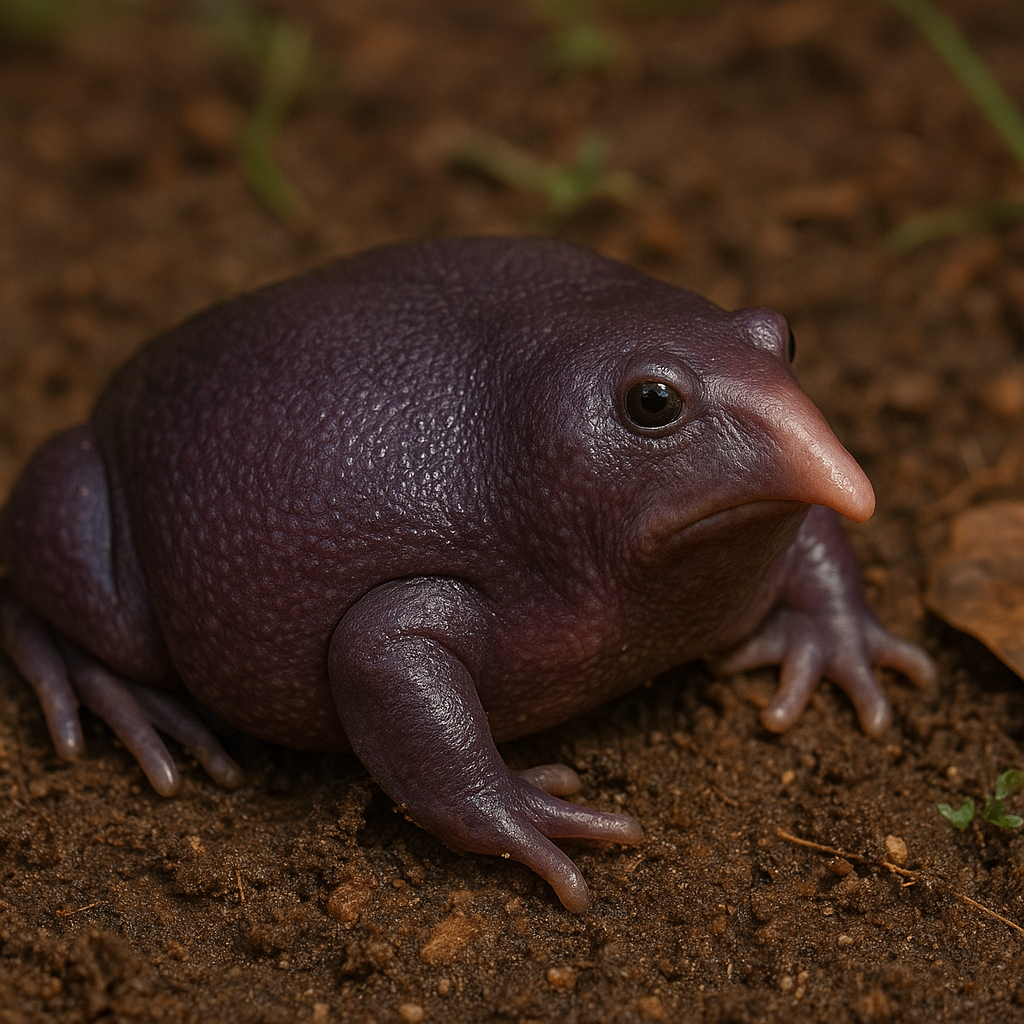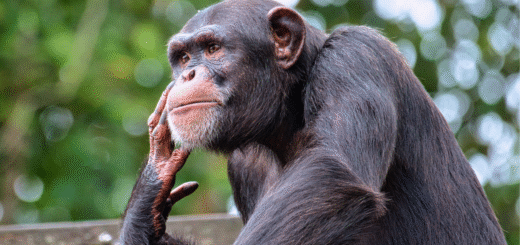Indian Purple Frog: Nature’s Mysterious Underground Dweller
The Indian Purple Frog (Nasikabatrachus sahyadrensis), also known as the Pignose Frog, is one of India’s most fascinating and rare amphibians. Discovered only recently in 2003, this unusual-looking frog is an ancient survivor that has remained hidden from the world for millions of years. Found exclusively in the Western Ghats — one of the world’s biodiversity hotspots — the Indian Purple Frog is a true natural wonder.

Unique Appearance
The Indian Purple Frog’s appearance is strikingly different from typical frogs. It has a rounded, bloated body, a pointed, pig-like snout, and short, stubby limbs. Its skin is smooth and purple to dark violet, which helps it blend into the moist, muddy environments underground. Adults can grow up to 7 centimeters in length.
Unlike most frogs that have wide, leaping legs, the Purple Frog’s limbs are adapted for burrowing. It spends nearly its entire life underground, emerging only for a few days each year during the monsoon to breed.
Ancient Lineage
What makes the Indian Purple Frog even more fascinating is its evolutionary history. Genetic studies show that it diverged from other frogs over 100 million years ago, during the time when India was still connected to Madagascar. It is often described as a “living fossil,” offering scientists a rare glimpse into the deep evolutionary past of amphibians.
Behavior and Lifestyle
- Burrowing Life: The Purple Frog spends around 95% of its life underground, feeding primarily on termites and ants.
- Breeding Season: During heavy monsoon rains, males call out with a distinctive, loud croaking to attract females to temporary streams and ponds for mating.
- Short Surface Time: After breeding, both males and females return to their hidden subterranean worlds.
Its elusive nature has made it extremely difficult for researchers to study this species in the wild.
Habitat and Distribution
The Indian Purple Frog is endemic to the Western Ghats, particularly in parts of Kerala and Tamil Nadu. It thrives in moist forested regions, often at elevations between 600 to 1200 meters. Due to its highly specialized habitat requirements and limited range, it is vulnerable to habitat loss caused by agriculture, deforestation, and urban expansion.
Conservation Status
The International Union for Conservation of Nature (IUCN) has listed the Indian Purple Frog as Endangered. Major threats include:
- Habitat destruction
- Pollution
- Climate change
Efforts are ongoing to raise awareness about this unique species and to protect the Western Ghats’ fragile ecosystems.
Why the Indian Purple Frog Matters
Beyond its uniqueness, the Purple Frog is a symbol of India’s incredible biodiversity. Protecting it means preserving an ancient piece of Earth’s evolutionary story and maintaining the health of the Western Ghats, a UNESCO World Heritage Site.
Final Thoughts
The Indian Purple Frog is a hidden gem of India’s wildlife, a mysterious creature that has survived unchanged for millions of years. Its story reminds us how much there is still to learn about the natural world and how crucial it is to conserve endangered species and their habitats.








